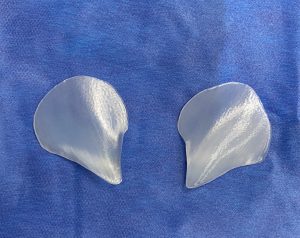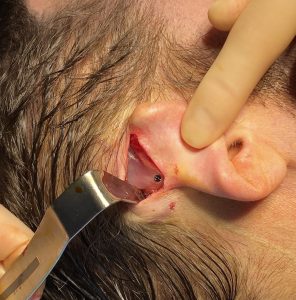Background: The mastoid process is an extension of the temporal bone located behind the ear. It has a smooth conical shape onto which numerous muscles attach. (e.g., sternocleidomastoid) It is a projection because of the large air cells within it and is easily visible particularly in the shaved head male. Because of its location the only time it is considered for aesthetic management in my experience is in the patient who sees it as an unaesthetic protrusion and desires its reduction.
The mastoid process, however, can appear as a concavity rather than a convexity is if the temporal area above it is aesthetically augmented. Custom temporal implants for the side of the head and custom back of the head implants that wrap around onto the posterior temporal region can potentially make what lies below it (mastoid process) now appear as deficient. This pseudo spot deficiency can be augmented by a custom skull implant design.
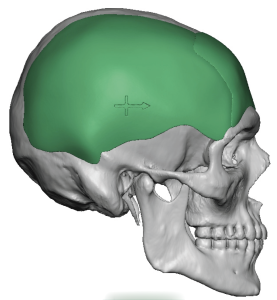
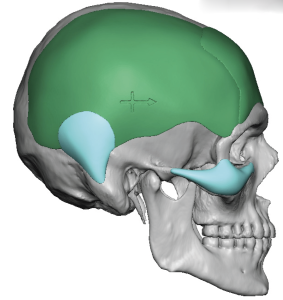
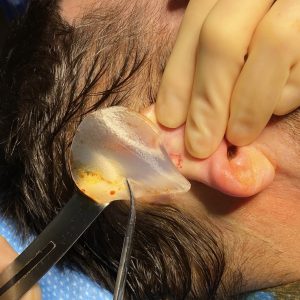
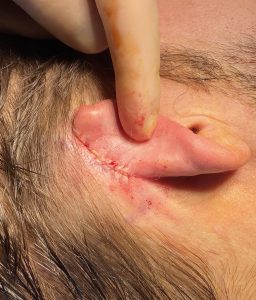
This is a good example of how augmenting one area can sometimes create a need to augment an adjacent area as well. As the temporal region above the mastoid got wider the mastoid area by comparison looked smaller or like a defect below it. Since the mastoid process is a part of the temporal bone total or complete temporal augmentation involves the mastoid area as well.
Case Highlights:
1) The mastoid bone of the skull has a convex contour which can become a concave contour with significant temporal augmentation above it.
2) Small mastoid skull implants can be designed to fill in the created skull deformity and blend into the temporal implant above it.
3) Mastoid skull implants are placed through sulcus incisions being the ear.
Dr. Barry Eppley
World-Renowned Plastic Surgeon



